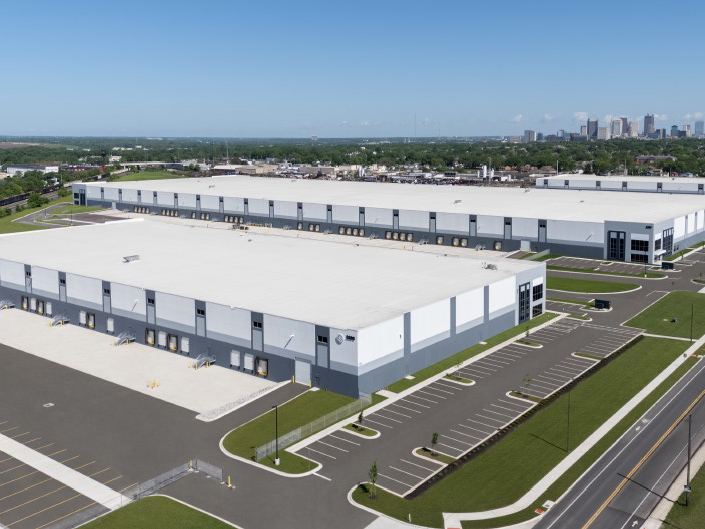Opportunities Abound for Disciplined Investors
Even in this down cycle, those with capital can find sound investments, according to Tal Seder of Sabal Investment Holdings.
Commercial real estate is being impacted by inflation, interest rates and bank distress. Capital markets have weakened, banks have restricted lending, and any debt available is expensive. Compounding the issue is the widely reported $1.5 trillion in CRE loans coming due for repayment by year-end 2025. Community and regional banks, who provided the largest share of commercial real estate loans in 2022, are severely impacted. Many borrowers are struggling to refinance properties.
Commercial real estate valuations are also affected. Some forecast a 40 percent decline in retail and office valuations. However certain office and retail sub-categories and locations remain in demand and command solid pricing.
Questions persist. Will employment numbers remain strong? Will the Fed cut rates or will we continue on in a higher rate environment? Industry participants are sitting on the sidelines and transaction activity has slowed. However, there are solid investment opportunities for disciplined players with capital to put to work, even in this down cycle.
Office struggles
The office sector is in trouble. Eyes are on REITs with significant office holdings and relatively high levels of debt to see how they’ll fare. New, or recently refurbished, Class A trophy buildings with amenities (i.e., outdoor space, gyms, restaurants, automated systems, modern ventilation) in growth markets are desired by long-term creditworthy tenants. Expect these assets to perform. Older properties must offer spec suites, outsized tenant improvements and bargain rents to retain or attract tenants today.
Some markets are faring better than others. Miami benefits from the mass population of northeasterners that relocated there during the pandemic. Conversely, Chicago and San Francisco are challenged with elevated vacancy rates. Major corporate users relocated out of these cities citing safety concerns and tax rates.
Though more companies are mandating a return to the office, it won’t resolve the glut of struggling assets. Some will return to lenders, while others will be repurposed or torn down.
Reconsidering retail
Retail performed poorly during the pandemic. However it’s recovering. CBRE’s U.S. Real Estate Market Outlook 2023 indicates that lack of new supply is buoying the sector with positive net absorption, rising rents, and lower vacancies resulting. The report also confirms that consumers still prefer in-store experiences. Notably, some online retailers, including Warby Parker, Allbirds, Parachute, Everlane, and Collars & Co. have taken notice and are opening brick-and-mortar stores.
Retail is a broad category, however. Some segments and locations are performing better than others. For example, grocery-anchored retail, as well as some strip centers, have held up. Additionally, traffic at suburban retailers has accelerated, likely a result of markedly fewer people commuting to offices in urban downtowns.
Industrial in high demand
The pandemic highlighted consumers’ desires to get goods delivered quickly. It also underscored the need to increase supply and store it in domestic facilities to reduce supply chain delays. This asset class is a proven necessity and will continue to attract investors. CBRE believes leasing activity will moderate through 2023, and demand should continue to keep up with supply. A 13th year of positive net absorption, a near record low vacancy rate and solid rent growth are expected.
Multifamily strength
Like industrial, multifamily is essential. People need a place to live, thus apartments, horizontal multifamily, and manufactured housing will perform, no matter a downturn. When sourcing multifamily investments, it’s imperative to seek opportunities in markets with population growth, ideal supply/demand variables and good schools. Additionally, affordable and workforce properties, which enjoy demand in a good economy, benefit even further by a downturn. Thus, demand for these units should strengthen. Many assets are also backed by mission-driven, agency grade loans, making multifamily better positioned than other asset classes to hedge against inflation. One concern is COVID-19 related eviction bans that persist in some cities, including Los Angeles and Bay Area locations.
Distress opportunities
Recent bank failures, particularly Signature Bank, highlight coming opportunities to invest in distressed commercial real estate loan portfolios. Signature’s $60 billion in CRE assets—comprising NYC multifamily, commercial and single-family residential loans—will be marketed for acquisition this summer by the FDIC.
Trepp reports in its recent Bank CRE Lending Outlook that, in 2022, banks (including small, regional and national institutions combined) dispersed $479.1 billion in commercial real estate loans, a striking majority compared to the other sources, which include: CMBS loans at $54.6 billion, Life Companies at $84.8 billion, Government-Sponsored Enterprises at $101.6 billion, and other miscellaneous sources combined at $101.5 billion.
With the current state of banking and the $1.5 trillion in CRE loans coming due by the end of 2025, pressure is mounting. Like Signature, some banks and assets may fall under FDIC purview and come for sale. It’s also likely many direct bank transactions will occur when M&A transactions force one or both institutions to dispose problematic CRE loan portfolios and when banks seek an infusion of fresh capital to shore up their capital structure.
Compelling commercial real estate investment opportunities exist. Buying at the right basis is always key. Those who are seasoned, disciplined, have capital and investment strategies that afford them the benefit of time, will undoubtedly thrive during the current storm.
Tal Seder is managing director for Sabal Investment Holdings, the real estate investment management firm serving institutional investors.








You must be logged in to post a comment.